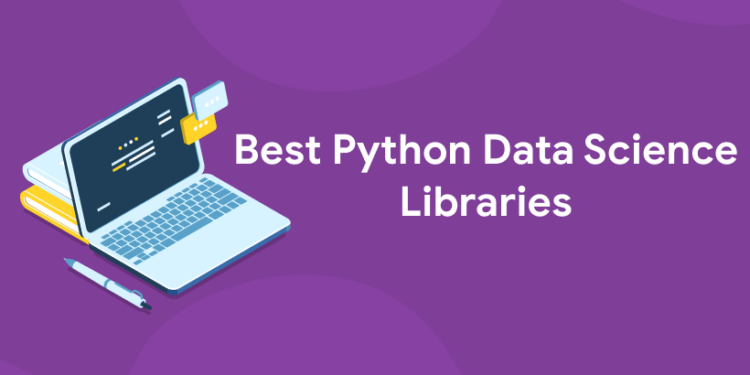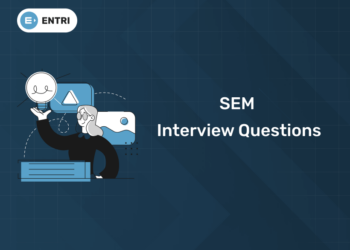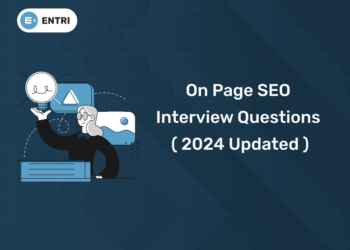Table of Contents
Data science has become extremely popular in recent years, thanks to the widespread use of data and machine learning algorithms in nearly every industry. According to McKinsey & Company, companies that use machine learning and predictive analytics can see their profits rise by as much as 50%. This popularity has led to an increase in data science tools and libraries available to programmers, including Python’s robust collection of data science libraries. The Python programming language has become an indispensable tool in the field of data science and machine learning, providing developers with a large variety of open-source libraries that help process data more efficiently. With so many libraries to choose from, however, it can be difficult to decide which one best suits your needs. Data science libraries are an excellent way to speed up your data analysis workflow by hiding the complex functionality from view. In this article, we’ll list 10 of the best Python data science libraries, covering areas like statistics, machine learning, and more. If you’re looking to get into data science in Python, you’ll want to check out these great resources.
“Ready to take your python skills to the next level? Sign up for a free demo today!”
1) Pandas
It’s been described as a data analyst’s best friend, and that’s no overstatement. Pandas is built on NumPy (see below) and provides a high-level interface for manipulating large datasets. It includes support for missing data, custom indexing, integration with databases like SQLite and PostgreSQL, and much more. Pandas were born out of frustration with existing tools, its creator Wes McKinney writes in an introductory post to his open-source project. I really didn’t want to have to implement my own Excel when I knew there were already good implementations available, he says. It also seemed pretty clear that having something like Matlab/Octave would be useful. In fact, he says, Matlab had become such a standard tool among researchers that it seemed silly not to just build one himself. That said, Matlab has some drawbacks: it can be expensive and doesn’t work well with distributed computing environments—two things McKinney wanted his new tool to address. The result is Pandas. The library has already attracted plenty of attention; last year it won both Packt Publishing’s Open Source Project of the Year award and Yahoo!’s Developer Award at PyCon 2012.
“Experience the power of our web development course with a free demo – enroll now!”
2) Numpy
NumPy is an open-source library for fast and efficient scientific computing. The NumPy core team consists of 8 contributors who work together to maintain and develop new features in NumPy, help out newcomers and mentor new core contributors. NumPy has been downloaded 1 million times from PyPI (Python Package Index) making it one of the most used libraries for data science. Its collection of data structures includes 1-dimensional arrays, 2-dimensional arrays, 3-dimensional arrays, etc up to tensors with shape manipulation functionality and broadcasting support. It also includes basic linear algebra functions such as matrix multiplication and linear algebra operations. It also provides a large set of high-level mathematical functions such as trigonometric, statistical, Fourier transform, and random number generation among others. It’s available on Linux, Windows, and Mac OS X platforms. There are many good reasons why you should consider using NumPy when doing data analysis. Below are some of them: Your analyses will be more concise because it allows you to represent vectors and matrices in a similar way as Numpy array objects. This means that you can use vectorized operations which allow your code to run faster than if you were using other languages like R or Matlab. Your memory usage will be reduced because all elements of your vectors and matrices are stored contiguously in memory; therefore there is no need for dynamic memory allocation during computations.
“Get hands-on with our python course – sign up for a free demo!”
3) SciPy
SciPy is an open-source library for mathematics, science, and engineering. SciPy includes modules for optimization, linear algebra, integration, interpolation, special functions, FFTs, signal, and image processing. It also has large-scale N-dimensional array manipulation. The newest version adds tools to help process array data stored in a columnar format such as HDF5. There are interfaces to many other open-source packages including MATLAB’s MATLAB Engine API and GNU Octave. It can also be used within a Jupyter notebook or code cell to add support for plotting computations that involve scientific notation without having to leave behind an environment designed specifically for interactive computing. In addition, it provides high-level commands for performing specific tasks like control flow (e.g., loops) and variables (e.g., arrays). This makes it easy to use Python interactively while still being able to perform calculations on larger datasets than you could easily fit into memory at once. These features make it very popular with researchers who need to wrangle large amounts of data but don’t want to deal with C/C++/Fortran complexities. Another key advantage of using Python is its large number of libraries for data analysis that have been built on top of SciPy. The downside of using Python for numerical computation is its relative slowness compared to compiled languages like C/C++.
4) Scikit-learn
Scikit-learn is a powerful machine learning library for python. It is built on top of SciPy and distributed under the BSD license. It provides various classification, regression, and clustering algorithms including support vector machines, random forests, gradient boosting, k-means and DBSCAN, gaussian mixture models (GMM), hidden Markov models (HMM), and feature selection. A range of evaluation tools is included such as cross-validation generators, metrics for classification and regression as well as graphics functions. This makes it suitable for rapid prototyping as well as production level deployment in small or large projects. The scikit-learn project was started by David Cournapeau in 2007 to provide an easy to use but flexible tool for data mining and data analysis tasks. The project has since expanded with many developers from around the world contributing code, examples and documentation. See also: Top 10 Python Machine Learning Libraries – 2017 Edition. The following table lists some popular machine learning libraries that are used with Python: Library Description Why? Algorithms MLlib Spark’s scalable machine learning library which offers utilities like pipelines, persistence and computation graphs; its main goal is to ease big data processing through distributed computing APIs. Apache Spark offers fast in-memory computations, making it ideal for online analytical processing (OLAP). Apache Mahout Mahout supports collaborative filtering based on item ratings using matrix factorization, collaborative filtering based on user profiles using matrix factorization and distribution estimation using Naive Bayes classifiers; it implements clustering techniques like hierarchical agglomerative clustering and K-means clustering; several utility classes like a page rank implementation.
“Ready to take your python skills to the next level? Sign up for a free demo today!”
5) Seaborn
Seaborn is a Python visualization library based on matplotlib. It provides a high-level interface for drawing attractive statistical graphics. It is built on top of matplotlib and shares its expressive power and API, meaning that most visualizations can be created with only minor changes to syntax. If you’re just getting started with data science in python, seaborn is a great place to start learning. Seaborn allows you to create statistical graphics quickly using well-known visualizations such as heatmaps, violin plots, histograms, boxplots, scatterplots and more. The library comes with many examples which makes it really easy to learn how to use it. You can find out more about seaborn here . For those who are interested in building their own custom charts or making advanced modifications to existing charts, I recommend taking a look at our chart gallery where we have detailed explanations of every chart type and example code showing how to build them from scratch. As always if you have any questions or suggestions please let us know! We hope these new additions will help make visualizing your data easier than ever before! And if you don’t already have an account I encourage you to sign up for free so that you can take advantage of all these features today!
6) Matplotlib
Matplotlib is a graphics library for Python. It provides an API for embedding plots into applications using general-purpose GUI toolkits like Tkinter, wxPython, Qt, or GTK+. It can be used in Pythons interactive shell as well as standalone scripts. If you’re starting out with data science using python, matplotlib is one of your first stops. You’ll be able to visualize data by writing fairly small amounts of code that focus on your variables of interest without getting hung up on fine control over every pixel and line of output. In addition to providing many common plot types (scatterplots, histograms, boxplots), it also supports more advanced features such as animation and multiple figure windows. In fact, it’s probably fair to say that matplotlib is a bit overkill if all you want are simple plots; other libraries will give you greater flexibility at lower cost (e.g., seaborn). But if all you want are simple plots but don’t know where to start, matplotlib will get you there quickly. The documentation is quite good overall; although some sections could use improvement (e.g., plotting functions). All in all, I highly recommend matplotlib for its ease of use and extensive functionality.
“Experience the power of our web development course with a free demo – enroll now!”
7) TensorFlow
TensorFlow is a fast-moving, open source software library for numerical computation using data flow graphs. Nodes in a TensorFlow graph represent mathematical operations, while the graph edges represent numeric data arrays (tensors) that flow between nodes. This flexible architecture lets you deploy computation to one or more CPUs or GPUs in a desktop, server, or mobile device without rewriting code. TensorFlow was originally developed by researchers and engineers working on Google’s Machine Intelligence research team for computationally intensive tasks such as machine learning and deep neural networks. The system is open-source and primarily written in C++. It can also be used from within other languages via bindings. In addition to its use of GPUs, TensorFlow has support for Intel’s Math Kernel Library. It also offers functionality for training and deploying neural networks. In 2015, Google made significant updates to its Cloud Machine Learning platform based on TensorFlow; among these were new APIs, added support for cloud computing environments through GCP components like Cloud Storage and BigQuery, and new tools available through Jupyter Notebooks. Other companies have since adopted it as well: Uber released an open-source version of its UberNet toolkit based on Tensorflow; Twitter uses it in production; Pinterest has an internal framework built around it; Apple uses it internally too—and IBM has started incorporating it into Watson.
8) NumPy/SciPy stack with Jupyter Notebook as IDE
NumPy and SciPy are pretty much ubiquitous in data science, but sometimes it’s easier to work in a full-fledged IDE, like Jupyter Notebook. With its wealth of built-in visualizations and access to an array of statistical tests, you can save a lot of time on your project by using Jupyter. There’s also Pandas, an extension to Python that works with NumPy arrays and makes data munging a breeze. It also has loads of visualizations built-in so you don’t have to waste time coding up your own display. These libraries make for a powerful one-two punch for any data scientist. Other key packages include Seaborn, which gives you great visualization capabilities out of the box; Statsmodels, which is useful if you want to do some more advanced statistics or visualize those results; Rpy2 and RHadoop, both of which facilitate seamless interaction between Python and R packages; and Shogun Machine Learning Toolbox if machine learning is a big part of your project. A couple other less frequently used tools include SymPy for symbolic mathematics and PyMC3 for probabilistic programming—but as I said before there are tons more than could be mentioned here!
“Get hands-on with our python course – sign up for a free demo!”
9) Seaborn + Matplotlib + Numpy Stack With Jupyter Notebook as IDE
A discussion of using Seaborn + matplotlib + numpy stack with Jupyter Notebook as IDE in python. Includes interactive plotting, ggplot-style functions like geom_smooth(), and datasets from models built in scikit-learn. If you are thinking about doing some data science on any substantial scale, you’re going to want a solid environment for development and analysis. A few different options exist, each with their own pros and cons. Seaborn is an extension to matplotlib that aims to make visualization more convenient, especially when working interactively at a command line prompt. It provides a high-level interface to common plots (like bar charts) while still allowing users access to low-level functionality (such as adjusting every aspect of how bars are drawn). It also provides useful tools for organizing plots into figures. The combination of seaborn and jupyter notebook allows us to do quick exploratory work without leaving an environment where we can share our code and results easily with others. This guide will walk through setting up seaborn, matplotlib, numpy, and jupyter notebook on your computer so you can get started quickly.
10) Other Libraries, Not Part Of The Main Stack
A good place to start for new python data science developers is to check out other libraries that are not part of their standard python stack. While matplotlib, scipy, and numpy are very popular in data science world and a requirement for many projects there are many other tools you can use to get your work done. Many of these tools will be more specialized than a general purpose tool like numpy or scipy but by using them you will learn more about what they can do and how you might use them in future projects. Here is a list of some interesting libraries that fall into this category: – sympy – pandas – networkx – ggplot (for those who prefer R) – rpy2 (allows calling r functions from python) – pyMC3 (Bayesian statistical modeling and probabilistic machine learning) – pyDatalad (data management system) There are many others as well. If you have used any of these libraries before please share your experience with it! For instance did it make your life easier? Did it help simplify complex problems? Was it difficult to install/configure? If you are interested to learn new coding skills, the Entri app will help you to acquire them very easily. Entri app is following a structural study plan so that the students can learn very easily. If you don’t have a coding background, it won’t be any problem. You can download the Entri app from the google play store and enroll in your favorite course.
“Ready to take your python skills to the next level? Sign up for a free demo today!”
Related Articles











